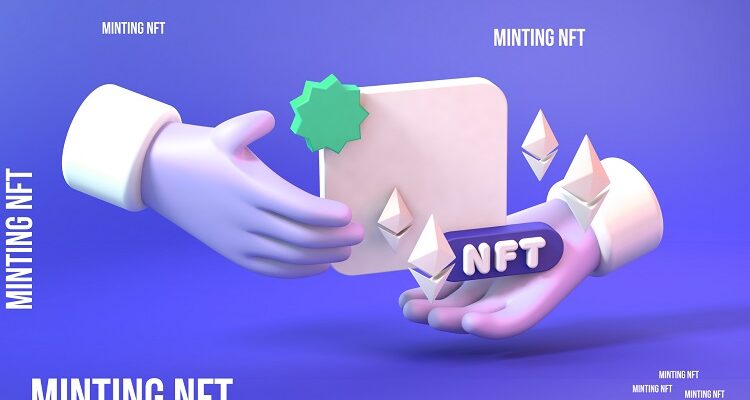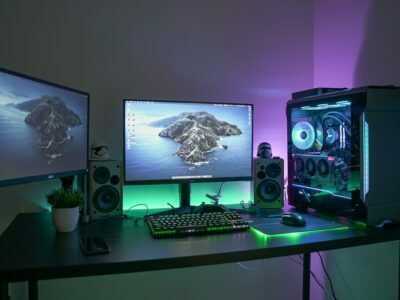Non-fungible tokens, or simply NFTs, became one of the top most searched words on the internet when traditional auction house Christie’s auctioned an NFT artwork by digital artist Beeple for over $69.3 million in March. Beeple boosted the NFT concept directly into the media spotlight, and more and more people are looking for use cases of NFT and blockchain technology to eventually implement in their personal projects or businesses. Here is what you need to know about NFT blockchain.
Table of Contents
What is NFT crypto?
NFT stands for non-fungible token. An NFT token is a crypto asset or digital asset that represents real-world objects and properties, such as art, photography, image, video, music, game items, and more. NFTs are bought and sold on online marketplaces, usually with the cryptocurrency Ether (ETH), and most NFTs are encrypted with blockchain Ethereum smart contracts.
Although they have been around since 2014, and some enthusiasts trace their origin back to 2012 with colored coins (colored Bitcoins that were sold at different values than other Bitcoins) NFTs first gained notoriety in 2017 with the online game Cryptokitties – which allows users to create, adopt, collect, buy, sell and trade digital cats – each kitten is a unique NFT collectible.
In the same year, that is 2017, digital collectibles called Cryptopunks emerged – which are 10,000 artistic 24×24 pixel images generated by computer algorithms – each image is called a Punk and is a rare collectible item from the ERC-721 standard Ethereum blockchain.
But it was in early 2021 and in recent months that they are becoming an increasingly popular way to create, buy and sell digital artworks.
NFTs are usually one of a kind, even if they are part of limited edition packages, and they have unique codes or IDs. The smart contracts incorporated in NFTs create digital scarcity.
Most people who do not yet understand NFT often wonder why some people spend millions of dollars on digital content that any Internet user can view online for free, share on their social networks, and even download? Because a non-fungible token allows the buyer or collector to own the original item. A non-fungible token or NFT usually contains an intangible contract and an embedded authentication ID, which serves as proof of ownership or proof of authenticity.
What is NFT and Blockchain?
NFTs or non-fungible tokens are digital assets or crypto assets that are unique, have verified proof of authenticity, and are traded on markets built on blockchain technology.
NFT technology represents something unique, collectible, and with real money value, and allows the owner to prove that the crypto asset is theirs.
NFTs are like objects or limited edition items such as collectible stamps. But, the buyer does not receive a physical object, fine art or any historical collectible item, instead the buyer receives a digital token linked to a digital file that serves as proof of ownership of some specific asset, be it a piece of art, music, video, image, digital painting, digital drawing or a Esports highlight such as NBA collectibles or Weplay collectibles.
In simple terms, Blockchain – is a data structure or a distributed digital ledger that keeps transaction records of every file, information or asset while ensuring security, verification or transparency and decentralization. In essence, Blockchain works as a chain of records stored in the form of blocks, but which are not controlled by a central authority, government, or organization.
How NFT blockchain work?
NFTs are created, minted, recorded, and stored on a blockchain technology, such as Ethereum, WAX, Flow, Binance Smart Chain, and Tezos – which are digital, decentralized ledgers that record transactions.
Several blockchains and decentralized protocols have resources and tools that support the creation of NFTs. Most non-fungible tokens are part of the Ethereum network – and have their own cryptocurrency, Ether (ETH).
The Ethereum blockchain allows various software developers and programmers to create and develop apps on its network, which opens up a variety of projects, tools, platforms, and digital wallets that make the NFT market more attractive.
With NFT technology any digital file can be minted or transformed into a digital asset registered on a blockchain, thus making it easier to verify ownership, collect and trade NFTs.
The other difference of NFTs is that they can only have one owner from time to time, i.e. only one owner at a time. The unique metadata of NFTs facilitates their real-time tracking and allows the transfer of NFT tokens between owners.
Is Ethereum an NFT?
No. An NFT is not the same as Ethereum. NFTs are not cryptocurrencies like Bitcoin or Ethereum. An NFT can be minted using Ethereum’s smart contracts, and are usually bought and sold in Ether (ETH) the digital currency of the Ethereum network.
The main difference between Ethereum and NFT, is that Ethereum is a fungible asset, meaning that one Ethereum or 1 ETH is always worth 1 ETH.
Digital currencies like Ether have the same value, which means that one Ether is always equal in value to another Ether.
An NFT token is different from another NFT token, either in properties or metadata and values. Each NFT has its own digital signature that makes it impossible to exchange for another NFT.
A clip of an NBA Top Shot highlight, for example, is not the same as one of the NFT artworks from Beeple’s digital collage Everydays: The First 5000 Days, simply because both are NFTs. An NBA Top Shot collectible is also not the same as another NBA Top Shot collectible, even if they are from the same package.
What blockchain NFTs use?
Blockchain technology and smart contracts based on NFTs offer artists, graphic designers, content creators, brands and companies a unique and exclusive opportunity to monetize and sell digital products without intermediaries. Art creators no longer need to rely on art galleries, stores, museums, or auction houses to display and sell art. Instead, the art creator can display his art in virtual galleries to millions of people around the world and sell it directly to the collector as an NFT artwork, which makes the transaction easier and also allows him to keep a larger share of the profits after the digital sales. The other advantage is that the creator of the artwork can continue to receive royalties whenever his artwork is sold to a new owner at a higher price.
What are some examples of NFTs?
NFTs or Non-fungible tokens can come in all shapes and sizes, from web-supported digital items. And these are the most notable sales in recent times:
Digital art
There is no doubt that the digital art piece by digital artist Mike Winklemann, better known on the Internet as Beeple, is the most expensive NFT ever sold so far. The collage of 5,000 digital drawings made into the most famous NFT work of the moment, Everydays: The First 5000 Days”, was sold at the traditional Christie’s auction house for a reported $69.3 million.
Memes
The girl in the iconic viral internet meme, “Disaster Girl” – a digital photograph of the girl Zoe Roth at age 4 looking into the camera while behind her there is a fire, was sold as NFT for $473,000 in April this year.
Social media posts, tweets, and website articles
Twitter co-founder and CEO Jack Dorsey is an example that tweets can be digital assets. Dorsey auctioned off his first tweet, and consequently the social network’s first as an NFT for over $2.9 million in March this year.
Kevin Roose, an editor and writer for The New York Times, turned his column into an NFT image and sold it at the NFT Foundation marketplace for $560,000.
Esports, highlights, and Esports moments
The National Basketball Association (NBA), has launched its NFT platform “NBA Top Shot” – which allows people to buy and sell NFT-based “highlights” and “moments” from North American professional basketball league and Women’s National Basketball Association (WNBA) games packaged as digital trading cards.
Music
Kings of Leon became the first rock music band to offer versions of their latest album “When You See Yourself” in the form of NFT atractables from the NFT YellowHeart online marketplace.
And American rapper Eminem has sold many of his musical works as NFT on the NiftyGateway platform, including an original beat.
Where and how can I buy an NFT?
To buy an NFT, you will first have to create a digital wallet such as Metamask or Coinbase Wallet, buy Ether (ETH), find a marketplace, and connect your digital wallet. There are thousands of NFT markets, but some are more popular and established in the crypto market.
OpenSea NFT, SuperRare, Rarible , Mintable, Foundation, and Nifty Gateway are some of the most popular NFT marketplaces in terms of users, assets, and sales, but there are others that focus on a niche, such as NBA Top Shot for moments and video highlights of major league US basketball turned into NFT packages.
Why are NFTs controversial?
NFTs have the potential to completely transform the arts and entertainment industry. Enthusiastic crypto buyers or collectors are collecting digital artworks on online auction sites, where they place the highest bid on rare digital collectible items.
However, the controversy comes from environmental activists concerned about the carbon footprint of NFTs. But it is not exactly the NFTs’ fault. Most NFTs are created or minted and traded on platforms based on Ethereum’s PoW (proof of work) blockchain, which in turn consumes a lot of energy, which is often powered by fossil fuels.
However, other NFTs are being minted on platforms based on PoS (proof of stake) blockchain protocols and networks such as Bianance Smart Chain and Tezos that offer alternatives and are more environmentally friendly.
The good news is that the Ethereum Foundation and the developers of the Ethereum blockchain have been working in recent times to upgrade the network to a PoS protocol. Ethereum 2.0 will be a PoS (proof of stake) algorithm. Instead of millions of computers with high computing power competing to process the same transaction, and solving complex mathematical problems. The new PoS ETH.2 algorithm will randomly choose just one to do the job, and the rest can delegate their ETH tokens to protect the network.



















Comments